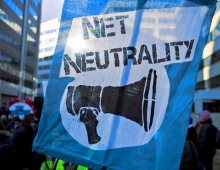
W3C Introduces an HTML5 Logo
HTML5 W3C unveiled today an HTML5 logo, a visual identity for the open web platform.
The World Wide Web Consortium is a collaboration of sorts in which corporations including Apple, Google, Microsoft and Opera and nonprofits such as Mozilla contribute to international Internet standards. In all, the W3C has 322 member organizations.
 W3C encourages early adopters to use HTML5 and to provide feedback to the W3C HTML Working Group as part of the standardization process. Now there is a logo for those who have taken up parts of HTML5 into their sites, and for anyone who wishes to tell the world they are using or referring to HTML5, CSS, SVG, WOFF, and other technologies used to build modern Web applications.
W3C encourages early adopters to use HTML5 and to provide feedback to the W3C HTML Working Group as part of the standardization process. Now there is a logo for those who have taken up parts of HTML5 into their sites, and for anyone who wishes to tell the world they are using or referring to HTML5, CSS, SVG, WOFF, and other technologies used to build modern Web applications.
The logo home page includes a badge builder (which generates code for displaying the logo), a gallery of sites using the logo, links for buying an HTML5 T-shirt, instructions for getting free stickers, and more. The logo is available under "Creative Commons 3.0 By" so it can be adapted by designers to meet their needs.
Microsoft currently has some 66 participants in 38 technical groups. The company works closely with other members on a range of matters, from drafting early specifications to developing test suites to improve interoperability.
HTML5 offers tremendous improvements in interactivity, graphics, typography and more. But it?s important to recognize that HTML5 is not just one technology, but rather that it encompasses a broad set of technologies. So, while there are some parts that are very stable and are ready to be used in real sites today, there are also some parts that are still changing rapidly.
With IE9 and HTML5 Labs - which gives developers a stable foundation to build their experiences on IE9 knowing that their sites will continue to work with build updates - Microsft is making this line clearer to encourage adoption rather than waiting. In IE9, Microsoft has put the site-ready parts of HTML5 that can be used today without worrying about the site breaking as the specification changes.
 W3C encourages early adopters to use HTML5 and to provide feedback to the W3C HTML Working Group as part of the standardization process. Now there is a logo for those who have taken up parts of HTML5 into their sites, and for anyone who wishes to tell the world they are using or referring to HTML5, CSS, SVG, WOFF, and other technologies used to build modern Web applications.
W3C encourages early adopters to use HTML5 and to provide feedback to the W3C HTML Working Group as part of the standardization process. Now there is a logo for those who have taken up parts of HTML5 into their sites, and for anyone who wishes to tell the world they are using or referring to HTML5, CSS, SVG, WOFF, and other technologies used to build modern Web applications.
The logo home page includes a badge builder (which generates code for displaying the logo), a gallery of sites using the logo, links for buying an HTML5 T-shirt, instructions for getting free stickers, and more. The logo is available under "Creative Commons 3.0 By" so it can be adapted by designers to meet their needs.
Microsoft currently has some 66 participants in 38 technical groups. The company works closely with other members on a range of matters, from drafting early specifications to developing test suites to improve interoperability.
HTML5 offers tremendous improvements in interactivity, graphics, typography and more. But it?s important to recognize that HTML5 is not just one technology, but rather that it encompasses a broad set of technologies. So, while there are some parts that are very stable and are ready to be used in real sites today, there are also some parts that are still changing rapidly.
With IE9 and HTML5 Labs - which gives developers a stable foundation to build their experiences on IE9 knowing that their sites will continue to work with build updates - Microsft is making this line clearer to encourage adoption rather than waiting. In IE9, Microsoft has put the site-ready parts of HTML5 that can be used today without worrying about the site breaking as the specification changes.





















